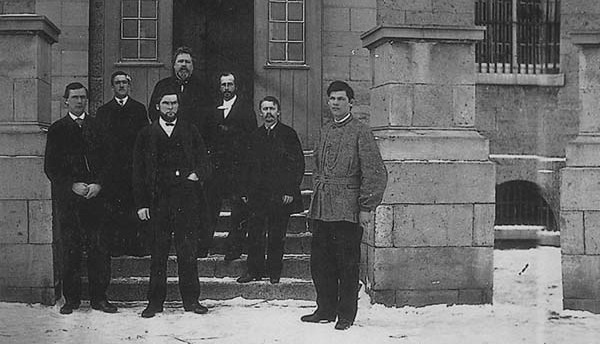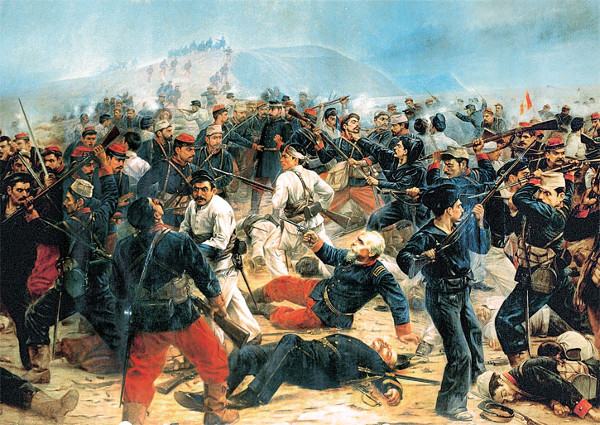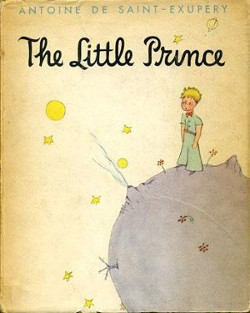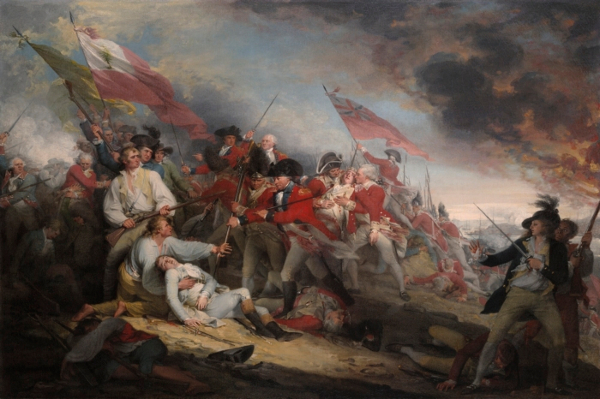The Galil machine gun includes a built-in bottle opener in the front handguard. Soldiers commonly damaged the lips of Uzi submachine gun magazines by using them to open bottles, so designer Yisrael Galili built a dedicated opener into his rifle.
Author: Greg Ross
Podcast Episode 98: The St. Albans Raid

Seemingly safe in northern New England, the residents of St. Albans, Vermont, were astonished in October 1864 when a group of Confederate soldiers appeared in their midst, terrorizing residents, robbing banks, and stealing horses. In this week’s episode of the Futility Closet podcast we’ll tell the story of the St. Albans raid, the northernmost land action of the Civil War.
We’ll also learn about Charles Darwin’s misadventures at the equator and puzzle over a groundskeeper’s strange method of tending grass.
Lanchester’s Laws

In 1916 English engineer Frederick Lanchester set out to find a mathematical model to describe conflicts between two armies. In ancient times, he reasoned, each soldier engaged with one enemy at a time, so the number of soldiers who survived a battle was simply the difference in size between the two armies. But the advent of modern combat, including long-range weapons such as firearms, changes things. Suppose two armies, A and B, are fighting. A and B represent the number of soldiers in each army, and a and b represent the number of enemy fighters that each soldier can kill per unit time. Now the equations
dA/dt = -bB
dB/dt = -aA,
show us the rate at which the size of each army is changing at a given instant. And these give us
bB2 – aA2 = C,
where C is a constant.
This is immediately revealing. It shows that the strength of an army depends more on its bare size than on the sophistication of its weapons. In order to meet an army twice your size you’d need weapons (or fighting skills) that are four times as effective.
Simple as they are, these ideas shed light on the historic choices of leaders such as Nelson, who sought to divide his enemies into small groups, and Lanchester himself illustrated his point by referring to the British and German navies then at war. Today his ideas (and their descendants) inform the rules behind tabletop and computer wargames.
Ukrania
While working at a tedious job in the summer of 1963, Jerry Gretzinger began drawing a map of an imaginary city. He added to the map fitfully for 20 years, put it aside, and then took it up again when his grandson found it in his attic. He’s now been mapping the area around “Ukrania” for more than 30 years, working an average of 20 minutes a day.
The activity is not entirely in his own hands. He draws from a special deck of cards to determine the focus of each day’s work. A given card might tell him to add a new paint color, to shuffle the deck, or to add a new “void,” a region of blankness that obliterates part of the map and incubates a new world of its own. The Ukranians can fend off the void only with a retaining wall, which they are constantly constructing. But whether they can save themselves from oblivion not even Gretzinger knows. “That’s why I keep going,” he says.
The current map covers about 1,500 square feet, representing an area of 14,400 square miles. More here.
Reading a Pitch
In 1972, Addison-Wesley published an ad for three textbooks on the back of The American Statistician magazine. The ad began with this line:
Y LUAEB H O DTYO AOOSGL
In Word Ways, David Silverman wrote, “Care to try and figure out the hidden message? Although the slogan doesn’t have the pizzazz of (say) ‘Let Esso put a tiger in your tank’, it does have the advantage of universality; it can equally well be applied to the sale of shoes, ships or sealing wax (or, for that matter, floor wax).”
The Vennbahn

In the 1880s the Prussian state railways built a line to carry coal and iron across the High Fens south of Aachen. The line wanders across the modern border between Germany and Belgium, but according to the Treaty of Versailles the trackbed itself is Belgian territory. This has the effect of creating six German exclaves — regions of Germany that are surrounded entirely by Belgium (Belgium proper to the west, and the technically Belgian railway trackbed to the east).
The smallest of these exclaves, a farm known as the Rückschlag, measures only 150 × 100 meters and has an estimated population of four people.
The Vennbahn track was used by tourist services until 2001 but is now disused and has begun to be dismantled. But the trackbed itself still belongs to Belgium, so the six exclaves remain.
Fitting

Asteroid 46610 was named Bésixdouze in homage to Antoine de Saint-Exupéry’s character Le Petit Prince, who lived on Asteroid B-612.
B-612 is 46610 in hexadecimal.
(Thanks, Dan.)
A Closed Road
In the 1950s a passenger rail line served Ithaca, N.Y. It was the only reliable way to get to Ithaca, working in all seasons and weather conditions, but it was slow and uncomfortable, so when possible many people traveled instead by car, air, or bus. The railway didn’t make enough revenue to continue the service, and in May 1959 it shut down the line.
The commuters expressed real dismay. Their daily choices to travel by other means had been too “small” to reflect their desire for continued rail service; the railway, by contrast, had had to make one big, long-term decision whether to maintain the line. Both sides were acting rationally, but they’d reached an outcome that no one preferred.
Cornell economist Alfred E. Kahn called this the “tyranny of small decisions”:
The short- and long-run determinations by business men are governed by decisions of customers involving a corresponding range in size and time-perspective — to buy a single candy bar, a camping trip, an automobile, a house, or to enter a rental contract of short or long duration. Still, the ‘size’ or importance of the individual choices by customers is typically less than of those made by the business man, so that each of the latter’s decisions reflects a prospective adding up of the consequences of a large number of customer actions taking place over a period of time.
And the “sum” of these small decisions may not reflect what people really want. “[I]f one hundred consumers choose option x, and this causes the market to make decision X (where X equals 100x), it is not necessarily true that those same consumers would have voted for that outcome if that large decision had ever been presented for their explicit consideration. If this is true, the consumer can be victimized by the narrowness of the contexts in which he exercises his sovereignty.”
(Alfred E. Kahn, “The Tyranny of Small Decisions: Market Failures, Imperfections, and the Limits of Economics,” Kvklos 19:1 [1966], 23-47.)
The German Tank Problem

During World War II, as they mulled whether to attempt an invasion of the continent, the Allies needed to estimate the number of tanks Germany was producing. They asked their intelligence services to guess the number by spying on German factories and counting tanks on the battlefield, but these efforts produced contradictory estimates. Finally they resorted to statistical analysis.
They did this by studying the serial numbers on captured and destroyed German tanks. Suppose German tanks are numbered sequentially 1, 2, 3, …, B, where B is the total number of tanks that we seek to know. And suppose that we have five captured tanks whose serial numbers are 21, 35, 42, 60, and 89. It turns out that
where N is the sample size (here, 5) and M is the highest sampled number (here, 89). In this example, the formula tells us that B = 105.8, so we’d estimate that 106 tanks had been produced at that time.
In the event, Allied statisticians reportedly estimated that the Germans had produced 246 tanks per month between June 1940 and September 1942. Intelligence estimates had put the total at about 1,400. When the Allies captured German production records after the war, they found that they had produced 245 tanks per month during those three years, almost precisely what the statisticians had predicted, and less than 20 percent of the intelligence estimate.
(Thanks, Ryan.)
Good Fortune

In 1777, in conversation with diplomat Arthur Lee, Benjamin Franklin reflected on the “miracle” of the American Revolution:
To comprehend it we must view a whole people for some months without any laws or government at all. In this state their civil governments were to be formed, an army and navy were to be provided by those who had neither a ship of war, a company of soldiers, nor magazines, arms, artillery or ammunition. Alliances were to be formed, for they had none. All this was to be done, not at leisure nor in a time of tranquillity and communication with other nations, but in the face of a most formidable invasion, by the most powerful nation, fully provided with armies, fleets, and all the instruments of destruction, powerfully allied and aided, the commerce with other nations in a great measure stopped up, and every power from whom they could expect to procure arms, artillery, and ammunition, having by the influence of their enemies forbade their subjects to supply them on any pretence whatever. Nor was this all; they had internal opposition to encounter, which alone would seem sufficient to have frustrated all their efforts. … It was, however, formed and established in despite of all these obstacles, with an expedition, energy, wisdom, and success of which most certainly the whole history of human affairs has not, hitherto, given an example.
“He told me the manner in which the whole of this business had been conducted, was such a miracle in human affairs, that if he had not been in the midst of it, and seen all the movements, he could not have comprehended how it was effected.”
(From Lee’s journal, Oct. 25, 1777.)
